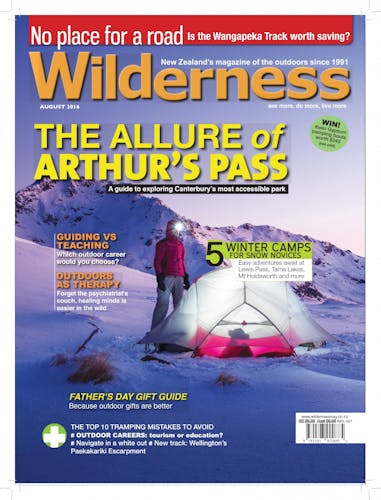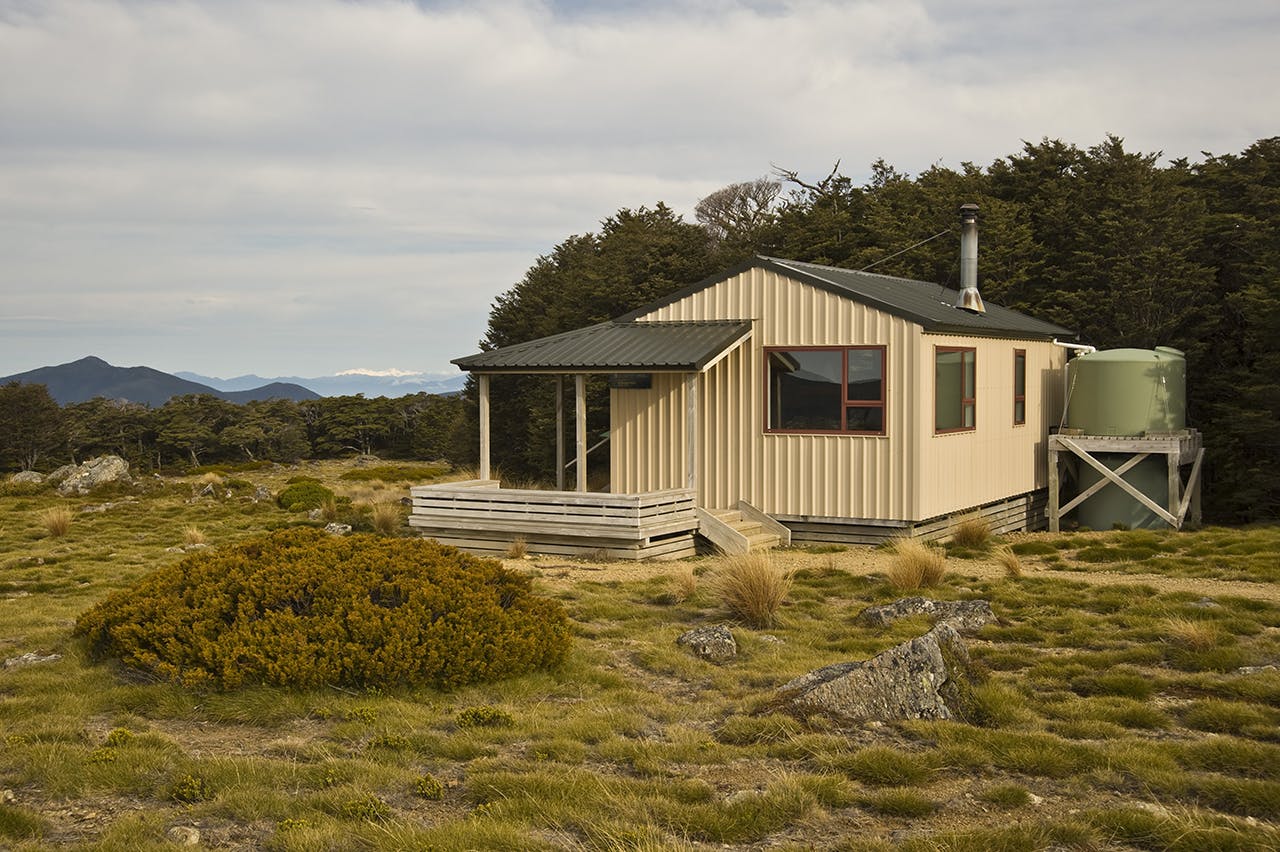Six great examples from DOC’s modern hut building era
When the Department of Conservation was formed in 1987, building new huts was pretty low on its list of priorities. The fledgling department already had a huge number of existing huts to maintain, not to mention the demands of trying to halt the decline of our indigenous biodiversity.
Continual underfunding from successive governments has hamstrung DOC in its ability to carry out its enormous range of duties, and in the early 2000s, there was considerable gnashing of teeth from the outdoor community at plans to reduce the backcountry hut network. Huts, however, got something of a reprieve when in 2002 the Labour Government announced a $359 million injection for recreational facilities.
Architect and Hutt Valley Tramping Club member Ron Pynenburg got the job of designing the new DOC-era huts, with 4-, 6-, 12-, 20- and 40-bunk options. Taking the best features of old Forest Service designs, but modernising them to meet current building and fire regulations, he made a fine job of it. The new huts are comfortable (but not over-the-top), warm when heating is provided, and easy to keep clean.
So began a new era of hut building, which over the past 14 years has seen dozens of new huts erected – mostly as replacements for older huts. While contractors usually do the actual building, the huts are planned and budgeted for by DOC managers, who have made some particularly inspired decisions about where to situate some of them.
Some trampers grumble that the new huts are ‘soulless’, but there’s no doubt that in places they have transformed recreational use of an area, often by attracting lesser-experienced trampers or family groups. Here are six well worth visiting, all built within the last 12 years.
1 Parks Peak Hut, Ruahine Forest Park
The Parks Peak Hut, built in 2008, replaced the original built by the Forest Service in 1960. Set in a small clearing on a long forested ridge, at the same site as the old hut, the modern version is much more comfortable and cosy. It’s a great destination in summer or winter.
2 Maungahuka Hut, Tararua Forest Park
In 2006, the new Maungahuka Hut replaced an old Forest Service hut at the same site – which was always an inspired choice for a hut. It overlooks a large tarn with a grand sweep of the Tararua tops beyond. Nearby views look toward Mt Taranaki and the infamous Tararua Peaks.
3 Sylvester Hut, Kahurangi National Park
The 12-bunk Sylvester Hut occupies a very pleasant site, nestled on the edge of beech forest with views over the Cobb Valley and Arthur Range. It replaced a cold, unappealing hut called Bushline, located in the forest below.
4 Nina Hut, Lake Sumner Forest Park
I remember well a frigid winter’s stay at the dark, unappealing old Nina Hut, which occupied a sunless, cold spot on the north bank of the Nina River. When DOC replaced it in 2002, they chose a site on the south side of the valley, in a higher area that gets a lot more sun, and has views. Brilliant.
5 Brewster Hut, Mt Aspiring National Park
The modern 12-bunk Brewster Hut is a great example of a comfortable, larger hut completely transforming the use of a place. The third hut on site (built 2007), the new Brewster Hut replaced a far smaller hut and has become a much-sought after destination, with nearby Mts Armstrong and Brewster offering options for trampers and climbers.
6 Green Lake Hut, Fiordland National Park
Green Lake occupies a large bowl hemmed by mountains, and is one of Fiordland’s most attractive lakes. It was formed by a colossal landslide, the largest known in the world. An older hut used to exist in a shady edge of the lake in the forest, but in 2006 DOC chose to build a new 12-bunk hut out in the open, in a place with expansive views. It was a great decision.








